We sincerely hope that each of you, our readers, will greatly enjoy and appreciate this article we present about these 7 Incredible Insects of Europe. It was certainly our pleasure to compile the information for you. May it provide you with both education and increased awareness.
Obviously, while amazing, these few species listed herein represent only a portion of the natural wonders found throughout the region, however. Yet, it’s our belief that they serve as excellent examples of the wonders found here. Check out some of our other articles for similar marvels.
Mountain Apollo
Mountain Apollo Facts
- Leading off this article about these 7 Incredible Insects of Europe we present the stunning creature going by the name of Mountain Apollo.
- This gorgeous creation of Nature and evolution most frequently goes by the descriptive common name across its range. The insect does have another, very similar general title that it’s known by, however. That’s the apt, if less imaginative, term of the Apollo Butterfly.
- Within the scientific community, though, it’s much more typically referred to by its technical title. Thankfully, that’s a comparatively simple term for the layperson to pronounce. That’s true since it presently holds the formal moniker in the annals of science of Parnassius Apollo.
- It received that easy to pronounce name due to the efforts of the esteemed Carl Linnaeus. The highly respected Swedish zoologist and botanist accomplished the first recognition of it as a separate and distinct species. That scientifically noteworthy event occurred in 1758.
- The charming invertebrate holds that name in keeping with the practice among entomologists of naming species after deities. In its case, it’s named for the mythological Greek god. It stands out among its many relatives due to the existence of more than 20 known subspecies!
- The magnificent Mountain Apollo itself seems to be maintaining a population base that’s both stable and sufficient. That fortunate fact also appears to hold true throughout the entirety of its native range. The IUCN thus lists it as Least Concern on itd Red List of Threatened Species.
- The remarkable creature nevertheless faces at least some potential threats to its continued existence as a species. Most of these it shares with the majority of other species. Most also stem from the actions of humans. They include the perils of habitat loss and climate change.
Mountain Apollo Physical Description
The amazing Mountain Apollo garners a great deal of attention from its observers, and deservedly so. Yet that’s not just due to its scientific interest. It’s also quite popular for its sheer beauty. Not content to rely on that alone, however, Nature also blessed it with some respectable dimensions.
Like many Lepidoptera around the world, this gorgeous marvel of the insect world displays a certain degree of the physiological characteristic of sexual dimorphism. In its specific case, though, this trait manifests itself in terms of simple size. More precisely, females attain a slightly larger size.
Males of the species attain an average wingspan measuring approximately 2.4 – 3.4 in (6.2 – 8.6 cm). Their female counterparts, however, reach sizes ranging from roughly 2.6 – 3.7 in (6.5 – 9.5 cm). Exceptional specimens nevertheless do sometimes occur, of course, regardless of their gender.
That tendency to vary in overall appearance also extends to their color patterns, as well. Known as polymorphism, this trait therefore varies between individuals, wholly independent of their gender. It also occurs in larger groupings, mainly depending upon their precise geographical location.
In general, however, both sexes of the Mountain Apollo present the same patterns of color. The wings display a background of white. Intriguingly, along the edges of all wings this appears almost translucent. From there, however, the pattern of coloration changes quite dramatically.
That’s because the forewings of the wonder each display five large, black eyespots. Two additional such spots appear on the hindwings. They usually develop as bright red, but sometimes show as orange. These also vary in size and exact form between individuals of the amazing species.
- Kingdom: Animalia
- Phylum: Arthropoda
- Class: Insecta
- Oder: Lepidoptera
- Family: Papilionidae
- Genus: Parnassius
- Species: P. apollo
Mountain Apollo Distribution, Habitat, and Ecology
The dazzling Mountain Apollo evolved as native to a comparatively wide expanse of the surface of the globe. The precise location of that range might surprise some people, though. That’s true since the amazing Arthropod appears throughout much of Europe and a small part of Asia.
In Europe, it’s known from Scandinavia, through the central part of the continent, to Spain. The insect also makes its presence felt in such regions as parts of the Balkans, northern Greece, and parts of Italy, and France. But the insect also lives within a few select sections of central Asia.
The truly lovely Lepidoptera also evolved decidedly strong and clear preferences in terms of its choice of habitat. Due to this characteristic, the great majority of populations dwell in mountainous areas, thus the name. It apears at altitudes ranging from 1,300 ft (400 m) to 7,500 ft (2,300 m).
Its choices also serve to distinguish the stunning invertebrate from its many related species, due to their inhospitable nature. Individuals typically choose to live in largely stony and rocky areas. This creation of Nature does, however, sometimes appear in alpine meadows and pastures.
Adult specimens of the Mountain Apollo generally fly between the months of May and September. That exact timeframe varies somewhat, though, depending on the exact region and altitude at which the individuals appear. These feed on the nectar of a wide variety of local flowering plants.
After mating, the females of the species lay their eggs before winter, and in a wide variety of locations. In spring, these hatch into the caterpillar form. These subsequently feed voraciously on locally common flora. In most parts of its range, the creature typically has a single brood per year.
Mediterranean Mantis
Mediterranean Mantis Facts
- Next up in this gathering of 7 Incredible Insects of Europe comes the aptly-named marvel of the insect world known as the Mediterranean Mantis.
- This fabulous creation of Nature and evolution most frequently goes by the informative common name that we’ve chosen to use here. The insect also has a less often used general name, though. That’s the similar, but much less accurate, term of the iris mantis.
- Scientific professionals, such as researchers, however, typically refer to it by yet another name. That’s because they generally use its purely technical name when discussing it. The intriguing Arthropod currently bears the comparatively simple technical name of the Iris oratoria.
- It further shares a distinction in that regard with numerous other species. That’s due to the fact that the eminent Swedish zoologist, Carl Linnaeus, made the first official acknowledgement of it as a separate and distinct species. He accomplished this notable deed in the year 1758.
- Regardless of which name one chooses to employ, however, it remains a fascinating creature. Sadly, though, it’s now become regarded as as invasive species insome parts of the world. This sad status occurs due to its expansion into many non-native regions by man’s actions.
- Even without this controversial expansion of its range, the Mediterranean Mantis seems to be maintaining a population base that’s both sizeable and sufficient. The IUCN, therefore, lists it as Least Concern. This status appears on the organization’s Red List of Threatened Species.
- The marvelous insect nevertheless faces several potential threats to its continued survival as a species. In this, though, it follows countless other species. Its greatest threats clearly include habitat loss due to the expansion of man, and the ongoing effects of climate change.
Mediterranean Mantis Physical Description
In general overall terms, the marvelous Mediterranean Mantis achieves the same general body shape and appearance as other mantids. That’s not to say, though, that the species lacks any defining physical characteristics. This wonder of Nature stands out from others in its own way.
That distinction doesn’t occur in terms of physical size, however. That’s true since it ranks as a roughly average-sized member of its Order. It also displays the physiological trait of sexual dimorphism, like its relatives. In its case, however, this trademark remains quite minor.
The gender-based difference mainly appears in the size of the abdomen of the genders. More specifically, that of the female tends to be slightly larger. The difference further becomes even more pronounced as the individual ages. Otherwise, they appear nearly identical to each other.
Individual specimens of this species achieve an average body length equaling approximately 2.6 in (6.5 cm). Although exceptional individuals naturally occur, even these rarely exceed this by much. Like most mantids, its body develops as highly elongated, and colors adapt as camouflage.
When young, most examples of the amazing Mediterranean Mantis also display an overall pale shade. As these examples mature, though, this pattern changes to a primary background of grass-like green. In yet another minor gender-based difference, the wings of the female remain short.
But this marvel of Nature and evolution clearly distinguishes itself from others of its kind, especially those sharing its range, in one quite spectacular manner. When unfurled, the creature’s hindwings display a startling pattern. That’s the presence of a violet-brown eyespot on each of them.
- Kingdom: Animalia
- Phylum: Arthropoda
- Class: Insecta
- Order: Mantodea
- Family: Eremiaphilidae
- Genus: Iris
- Species: I. oratoria
Mediterranean Mantis Distribution, Habitat, and Ecology
Fortunately, both for the Mediterranean Mantis itself, and those of us who appreciate Nature, the Arthropod possesses a comparatively extensive natural range. That range, has, however, been indirectly extended even further, and quite significantly so, by the actions of human beings.
The fascinating insect evolved originally as indigenous to most of the continent of Europe. That area covers all of the southern portion of the continent, and extends to cover all but the most northerly sections. The marvelous fauna does seem to be more common in the south, though.
In fact, the very name of the invertebrate stems from the precise portion of Europe in which the first studies of it occurred. That’s because those earliest endeavors to understand it took place in the region of the Mediterranean Sea. This include such beautiful locations as Greece and Italy.
From there, however, the activites of man served to spread it to other parts of the world. This includes portions of Asia, the Middle East, and the United States, in North America. In all areas, though, it’s highly versatile in its habitat choice. It appears wherever sufficient vegetation occurs.
This holds true due to its nature. That’s because, like other mantises around the world, it evolved as a pure carnivore. Like them, the beautiful Mediterranean Mantis typically feeds as a highly efficient ambush predator. It also consumes virtually any prey of small enough size for it to handle.
Its own predators, meanwhile, are comparatively few. These threats mostly consist of various local species of birds. When threatened, though, it displays an evolved response. It faces the threat, rears up, and then raises and waves its forelegs threateningly. It also then displays the large eyespots.
Red-Tailed Bumblebee
Red-Tailed Bumblebee Facts
- Placing here in this compendium of these 7 Incredible Insects of Europe we present you the marvel of evolution titled the Red-Tailed Bumblebee.
- This beautiful insect quite understandably goes by the simple common name for visually obvious reasons. It does have a few other titles, though. These include Stone bumblebee, Lapidary bumblebee, and Fire-tailed bumblebee.
- Inside of the scientific world, however, it’s perhaps much better known by its technical designation. Thankfully, that’s a comparatively simple one for the layperson to pronounce. That’s because this beautiful biological wonder bears the official moniker Bombu lapidarius.
- The invertebrate received that epithet due to the efforts of the famous Carl Linnaeus himself. That renowned Swedish zoologist accomplished the first formal acknowledgement of it as a separate and distinct species. He achieved that scientifically noteworthy deed in the year 1758.
- Fortunately, the amazing Red-Tailed Bumblebee appears to be maintaining a population base that’s still stable and sufficient. That state also seems to hold true throughout the entirety of its natural habitat range. The IUCN therefore does not currently show it on its published Red List.
- Lamentably, it does appear to be declining in some agricultural areas, though. That’s generally attributed to a combination of pesticide use, monoculture crops, and intensive farming practices. Due to this, it’s now considered Near Threatened in specific portions of its range.
- It also must deal with the same greater dangers as all other forms of life on the planet today. Most of those hazards stem from the actions of mankind. Although many of these exist, its greatest threats likely consist of the closely related one’s of habitat loss and climate change.
Red-Tailed Bumblebee Physical Description
The visually striking Red-Tailed Bumblebee almost always receives its due measure of attention from those who encounter one of these marvels. Yet, that does not happen due to any impressive physical statistics. That’s true since, even among its many relatives, it’s a slightly small bee.
It does, however, follow an evolutionary pattern common among may species, including its kindred. That’s the fact that it displays a moderately high degree of the physiological trait of sexual dimorphism. In its case, this characteristic manifests itself in terms of both color and pure size.
In terms of its size, males of this Arthropod attain a slightly greater average size than their female counterparts. This gender typically averages between 0.55 – 0.63 in (14 – 16 mm) in total length. The females of the species reach mean lengths equaling between 0.43 – 0.63 in (11- 16 mm).
It additionally displays this gender-based difference in terms of patterns of color. That manifests with the males of this awesome insect presenting three bands of yellow, one at the base of the abdomen, and two on the thorax. It also has the standard red tail from which it derives its name.
Meanwhile, females of the Red-Tailed Bumblebee, including the queen usually present a slightly different appearance. Interestingly, these lack any of the yellow bands. This gender of the invertebrate also displays a more extensive red-colored section, covering roughly half the abdomen.
Other parts of the body also merit attention, and present the same general patterns regardless of sex. Its wings evolved as semi-transparent, and somewhat darkened with a smoky appearance. The short legs developed as strong and rather hairy, with specialized structures on its hind appendages.
- Kingdom: Animalia
- Phylum: Arthropoda
- Class: Insecta
- Order: Hymenoptera
- Family: Apidae
- Genus: Bombus
- Species: B. lapidarius
Red-Tailed Bumblebee Distribution, Habitat, and Ecology
There’s very fortunate news for those who appreciate the beauty of Nature. That’s due to the fact that the Red-Tailed Bumblebee evolved as native to a relatively broad swathe of the world. More specifically, it developed as indigenous to a particular portion of the continent of Europe.
With further precision, in this region population concentrations appear throughout the entire zone of habitation. The diminutive creature does, however, appear in greater concentrations in certain areas. These include the countries of Greece, Britain, Sweden, Finland, and Germany.
Sadly though, in the country of Ireland its numbers seem to be declining rapidly. Wherever the insect lives, however, it typically proves itself to be highly adaptable in terms of where it makes its home. That’s because population groupings manifest in several very different habitat types.
These locations even include such public regions as private gardens and public parks. It most commonly chooses to live in areas consisting of very open terrain, though. Unlike some varieties of related species, though, it generally avoids living in areas of moderate to heavy forestation.
The beautiful Red-Tailed Bumblebee generally makes its appearance in the summer, between June and August. Being social insects, like many Hymenoptera, all members of the hive work closely together. In its case, there’s little hierarchy among workers, just between them and the queen.
Most types of bumblebees generally stay close to their own hive when foraging. This one, however, tends to roam relatively great distances in search of food sources. Some individuals, in fact, venture as much as 5,741 ft (1,750 m) from the hive. For one of its kind, that’s an extreme distance.
The hives themselves, meanwhile, appear in widely varied types of locations. In this, it shows itself to be a highly opportunistic species. Locations for nests include such unexpected areas as under large stones or fallen logs. Colonies remains small, though, rarely exceeding 200-300 individuals.
Death’s-head Hawkmoth
Death’s-head Hawkmoth Facts
- Our next choice for inclusion in this listing of 7 Incredible Insects of Europe bears the intimidating moniker of Death’s-head Hawkmoth.
- Distinctively, the eye-catching common name for this amazing Lepidoptera really does remain that of the one used herein. Perhaps most notably, though, the unusual term actually serves as the common name for a total of three species placed within the genus Acherontia.
- The distinctiveness of these three forms, however, does not simply stop there. That’s because, in addition to the astonishing obvious physical trait, multiple other facts also work to set it apart from most other types of moths. These, in fact, are fascinating in their own right.
- Amazingly, the astonishing and highly unusual Death’s-head Hawkmoth evolved the ability to emit a high-pitched chirp. This action only occurs, though, when the arthropod feels either threatened or irritated. Few insects known to entomologists can make sounds internally.
- All three recognized varieties also evolved as relatively rapid fliers. In point of fact, one of them, the Acherontia atropis, constitutes the fastest known moth on the entire planet. That’s because individuals of that species have the ability to reach speeds of up to 30 mph (48 kph).
- Unfortunately, the IUCN, does not currently have a listing for any of the three forms of this wonder. That’s surprising, given the fact that each of them qualifies as quite rare. Like many creatures, these obviously face threats such as ongoing climate change and habitat loss.
Death’s-head Hawkmoth Physical Description
Not surprisingly, numerous physical differences naturally exist between the different types of Death’s-head Hawkmoth. All three types, however, also, as is to be expected, remain quite similar in terms of rough appearance. Many general descriptions therefore apply equally to them all.
Intriguingly, it must be pointed out, though, that measured adult wingspan varies quite significantly, even within the same gender and species. While not unknown, this trait definitely qualifies as moderately uncommon. Due to this fact, adults range in width of wings from 2 – 8 in (5 – 20 cm).
Understandably, like the majority of Lepidoptera, this marvel of Nature displays a moderate degree of sexual dimorphism. As a result of this physiological trait, in its case, females generally develop slightly larger than the males. Examples of that sex also tend to be slightly bulkier in shape.
The body of the magnificent Death’s-head Hawkmoth also displays a comparatively thick, bullet-shaped form. Its two forewings further develop as relatively long and narrow in structure. Yet the hindwings, however, appear much shorter, like most related forms of amazing invertebrate.
Its coloring also understandably varies between different specimens. But these typically consist of combinations of shades of brown, black, gray, and yellow. The astounding presence of a human skull-like marking on the back of the thorax, however, represents its most memorable feature.
- Kingdom: Animalia
- Phylum: Arthropoda
- Class: Insecta
- Order: Lepidoptera
- Family: Sphingidae
- Genus: Acherontia
Death’s-head Hawkmoth Distribution, Habitat, and Ecology
The species bearing the common name of Death’s-head Hawkmoth also have different habitat ranges. That alone sets them apart from many of their peers. One appears in parts of Europe. The other two members of the genus, however, live across widely scattered sections of Asia.
Impressively, all known forms of this amazing insect seem to be highly adaptable to varying habitats. As a general rule, though, the insects appear in regions with substantial foliage present. These regions most commonly includes temperate forests, as well as parks, and even home gardens.
The larval form of the mind-blowing Death’s-head Hawkmoth stays on or near a single host plant. These it feeds on voraciously. It shows no preference for type of host. The adults show a preference for honey, in addition to fruit. As a result, mature individuals often raid the hives of honeybees.
Its own natural predators, meanwhile, consist of the same as other moths. These typical threats mainly consist of the various avian species found in its region. Many bats also love to feed on it, though. Finally, the chirping ability it evolved serves the intended purpose of deterring these.
Conehead Mantis
Conehead Mantis Facts
- Next up in this compilation of these 7 Incredible Insects of Europe is the extraordinarily evolved invertebrate rightly called the Conehead Mantis.
- That highly evocative term appropriately serves as the most often used common name for this remarkable insect. This marvel of Nature and evolution also goes by another name, though. That’s its somewhat difficult to pronounce scientific name of Empusa pennata.
- Regardless of which of these terms one chooses to use for it, however, it remains blessed with a distinctive appearance. The preferred common name, quite understandably, derives from the presence of the incredible structure on the top of the awesome invertebrate’s head.
- The first recorded scientific recognition of this fantastic creature as a separate and distinct species occurred in the year 1815. That formal recognition took place as a result of the work of the well known Swedish naturalist, Carl Peter Thunberg, who also applied the epithet.
- For the moment, the marvelous Conehead Mantis appears to be maintaining a stable and sufficient population. This further seems to be the case throughout the entirety of its range. As a result, the IUCN list the species a Least Concern on its Red List of Threatened Species.
- The invertebrate must nevertheless be considered to be facing at least some threats to its continued existence as a species. One of these probably consists of the danger posed by increasing habitat loss. Its greatest threat, however, likely consists of ongoing climate change.
Conehead Mantis Physical Description
Although the marvelous Conehead Mantis fully deserves appreciation from those who view it, this does not derive solely from its sheer physical size. That aspect of the invertebrate does nonetheless rank as respectable, since the insect represents an above-averaged size variety of mantis.
Like most of its relatives across the globe, it also displays a moderate degree of sexual dimorphism. In its specific case, this trait manifests itself in two separate ways, though. Simple physical dimensions form the first of these, with the females attaining a slightly greater length than males.
This wonder of Nature and evolution achieves an average size slightly greater than the European Mantis. That being said, females reach an average length of about 4 in (10 cm). The smaller males, meanwhile, attain varying lengths, but rarely grow beyond 3 in (7.6 cm) in their total length.
The second form of gender-based differences among the remarkable Conehead Mantis appears in the form of the antennae of the male. These appendages generally possess a fine, feathery characteristic. However, only the male of the dazzling species develops these distinctive features.
Otherwise, the genders remain extremely similar in appearance. The colors vary, since it employs active camouflage, but certain ones are more common. These consist of green, pink, and various shades of brown. Its most noticeable feature, though, is the cone-shaped structure on the head.
- Kingdom: Animalia
- Phylum: Arthropoda
- Class: Insecta
- Order: Mantodea
- Family: Empusidae
- Genus: Empusa
- Species: E. pennata
Conehead Mantis Distribution, Habitat, and Ecology
The remarkable Conehead Mantis possesses a comparatively broad, if somewhat broken, range of habitation across the world. It’s broad because it covers parts of both Europe and Asia. It’s also broken, though, since it only appears in scattered parts of the two continents, not evenly.
More precisely, in Europe, the astonishing Arthropod seems to live within the countries of France, Portugal, Spain, Italy, Bulgaria, and Greece. In Asia, meanwhile, its only known habitat consists of the country of Lebanon. The exact for this pattern presently still remains undetermined.
In all of the regions of the globe in which it appears, however, its habitat preference remains decidedly the same. This specific form of mantis demonstrably prefers to inhabit more open areas, as opposed to denser forest regions. This mainly includes regions of scrub and perennial herbs.
The amazing Conehead Mantis prefers to reside within such regions because of its feeding habits. Like its many relatives, it evolved purely as a carnivore. It also feeds as an ambush predator. This powerful and efficient hunter eats a vast variety of small insects native to the same habitat.
In turn, the powerful hunter eventually falls prey to other, even larger predators. These threats usually vary according to its particular area, of course. Overall, however, these mainly include such animals as snakes, frogs, lizards, and a wide variety of avian species sharing its own region.
Violet Carpenter Bee
Violet Carpenter Bee Facts
- Now appearing in this grouping of 7 Incredible Insects of Europe we give you the colorful creation of Nature known as the Violet Carpenter Bee.
- Notably, the term applied in this article serves as the common name for a particular species of bee that truly stands out visually. However, this fabulous invertebrate also goes by another, hard to pronounce term. That’a its formal scientific name of the Xylocopa violacea.
- Regardless of the name one uses for it, though, the magnificent insect easily merits attention for much more than simply its beauty. Along with its obvious and highly distinctive appearance, this intriguing animal also stands out from related species for its physical size.
- Impressively, the lovely insect also ranks as one of the largest bees found in its part of the world. Thankfully, the work of Nature also holds yet another distinction. That’s the simple fact that the dazzling insect remains extremely docile, and attacks only if directly threatened.
- Quite fortunately, the fabulous Violet Carpenter Bee also stands out from other bees in one more very important manner. In point of fact, unlike many related species located across the globe, its numbers appear to be holding relatively steady, at least for the moment.
- The IUCN, therefore, currently has no listing for the insect on the organization’s published Red List of Threatened Species. Nonetheless, it must be considered to be facing some potential risk, at least. This mainly occurs due to habitat loss and the ongoing effects of climate change.
Violet Carpenter Bee Physical Description
The visually magnificent Violet Carpenter Bee unquestionably draws the eye of most fortunate observers, given its incredible appearance. However, this remarkably lovely Arthropod achieves this appeal with somewhat unique methods. It does so with a special combination of color and size.
Like a great many insects, including its numerous related species, the wonder of evolution also displays one more physical attribute of interest. That’s true since the invertebrate displays the physiological trait of sexual dimorphism. This remains a highly common trait throughout Nature.
Not only that, but mature adults of the species, of both genders, attain an average body length that measures approximately 1.2 in (3 cm). That’s a remarkably impressive measurement for a bee. The typical wingspan achieved by both sexes additionally measures approximately 2 in (5 cm).
The bodies of both the males and females also evolved to present the same general body shape. That holds true due to the fact that each of the genders displays a thick, black colored form. The majority of the remarkable body of the bee also appears covered in a layer of small hairs.
The female Violet Carpenter Bee, though, stands out for a particularly notable reason. In this instance, that refers to the fact that she physically distinguishes herself from the male in regards to the presence of a stinger. She evolved to possess one, while the male of the species does not.
It’s the delicate-seeming wings of this beauty themselves, however, that typically garner most of the attention this arthropod receives. That’s true since these sensitive parts of its body usually display an astonishing violet and blue color. Impressively, these also possesses an iridescent quality.
- Kingdom: Animalia
- Phylum: Arthropoda
- Class: Insecta
- Order: Hymenoptera
- Family: Apidae
- Genus: Xylocopa
- Species: X. violacea
Violet Carpenter Bee Distribution, Habitat, and Ecology
The remarkably stunning member of the Order of Hymenoptera known as the Violet Carpenter Bee impresses researchers in yet another surprising way. That occurs given the fact that the wondrous Arthropod evolved as indigenous to a comparatively broad range of the surface of the earth.
In point of fact, this native zone of habitation covers parts of two entirely separate continents. This represents one more statistic about the creature that distinguishes it. To be more precise, the beautiful invertebrate inhabits portions of both the large continents of Asia and Europe.
Within that expansive range, however, this marvelous and relatively large variety of bee continually demonstrates very specific preferences regarding its choice of habitat. That holds true because this fascinating insect’s most commonly found residing in regions consisting of wooded areas.
Most commonly this habitat choice consists of forests. But, it occasionally even includes such surprising places as public parks. Individuals further inhabit a great range of altitudes. Amazingly, a few scattered individuals have been seen at elevations equaling as much as 5,249 ft ( 1,600 m).
Its lifestyle does remain consistent with the greatest percentage of its known relatives, though. Just like other types of carpenter bee, the Violet Carpenter Bee lives a primarily solitary life. In fact, members of this intriguing species typically only come together for the purpose of mating.
Individuals of both genders bore tunnels into soft wood with their powerful mandibles, thus earning the common name. After completing mating, the female lays her eggs in chambers she constructs. For its dietary needs, both genders feed on pollen and nectar taken from various local flora.
Old World Swallowtail
Old World Swallowtail Facts
- Closing out this article about these 7 Incredible Insects of Europe we present to you the stunning Lepidoptera named the Old World Swallowtail.
- The most often employed common name for this gorgeous creation of Nature and evolution is the informative term given herein. The stunning invertebrate does have other alternate titles, though. These include the similar epithet common yellow swallowtail.
- Within most scientific circles, however, the delicate creature’s likely much better known by its technical label. Thankfully, that’s a relatively simple term for the layperson to pronounce. That’s because the truly lovely Lepidoptera holds the official moniker of Papilio machaon.
- The Arthropod received that scientific designation due to the efforts of Carl Linnaeus himself. The eminent Swedish zoologist accomplished the first recognition of the animal as a separate and distinct species. That scientifically noteworthy deed occurred in the year 1758.
- It’s fully notable for far more than just its great beauty, though. That’s due to an particularly impressive statistic the insect holds. That’s true since, to date, entomologists recognize an extraordinary total of 41 separate subspecies of this intriguing butterfly still in existence.
- Fortunately, the amazing Old World Swallowtail appears to be maintaining a population base that’s both sufficient and stable. This pleasant state of affairs further seems to hold true across the entirety of its range. The IUCN therefore currently lists it as Least Concern on its Red List.
- The magnificent insect nonetheless must be considered as facing the same potential threats to its existence as all other species, at least. Most of these perils stem from the actions of mankind. They include such varied dangers as habitat loss and ongoing climate change.
Old World Swallowtail Physical Description
The truly breathtaking Old World Swallowtail typically captivates those individuals fortunate enough to encounter the marvel. Pure physical size isn’t generally one of those, though. That’s because, regardless of its eye-catching appeal, it’s a roughly average-sized member of its Order.
It distingishes itself in this regard in one very specific manner, however. That’s true given that fact that, unlike most of its kindred, it displays no noticeable degree of the physiological characteristic of sexual dimorphism. This makes identifying the genders difficult for many of its observers.
The body of the caterpillar stage of both sexes of the wonder attains an average length equaling approximately 1.8 in (4.6 cm). That of the mature adult retains roughly the same measurement. Though mostly showing black above, with yellow trim, the underside mainly presents as yellow.
It’s the captivating wings of the visually stunning Old World Swallowtail that generally garner the most attention, however. These appendages often vary significantly in wingspan, regardless of gender. On average, this equals between 2.6 – 3.4 in (6.5 – 8.6 cm). Few exceed this by much.
On the upperside of both hindwings, a distinctive feature usually appears. That’s the existence of a relatively large eyespot located near the tail of the remarkable invertebrate. This itself shows a reddish-orange shade, with the presence of a black border near the edge of the hindwing.
Further enhancing this is the presence of 6 small, blue eye-spots located on the same wing. Yet Nature isn’t done with this wonder of evolution yet. These same hindwings also possess a pair of sharply protruding tail-like structures. These provide a resemblance to the bird of the same name.
- Kingdom: Animalia
- Phylum: Arthropoda
- Class: Insecta
- Order: Lepidoptera
- Family: Papilionidae
- Genus: Papilio
- Species: P. machaon
Old World Swallowtail Distribution, Habitat, and Ecology
The intensely beautiful Old World Swallowtail apparently evolved as native to an extremely wide expanse of the surface of the earth. The precise location of that zone of habitation, though, probably won’t surprise many people, though. It’s clearly intimated by the very name of the Arthropod.
The mesmerizing insect developed as partly endemic to what’s known as the Old World region of the earth. Yet the invertebrate also evolved as native to an even greater range. That includes the entirety of both Europe and Asia, and even extends to portions of the northern sections of Africa.
The intrepid animal also demonstrates a decidedly flexible approach to its preferences regarding its choice of habitat. The butterfly therefore inhabits a moderately broad range of ecosystems. These typically consist of such regions as areas of meadows, hilltops, and even areas of tundra.
It further displays an amazing adaptability to an extensive range of altitudes across its native range. In some regions, the invertebrate lives near sea level. In other sections, though, like the Kashmir Valley, individuals sometimes appear at heights of up to as great as 16,000 ft (4,877 m).
Like its countless living relatives, the Old World Swallowtail developed as entirely herbivorous in nature. Adults of this particular species primarily feed on the flower nectar of plants from a single Family. In its case, this consists of members of what’s commonly known as the celery Family.
After concluding the mating process, females lay eggs individually, usually on the underside of a food plant. The caterpillar form feeds on a wider variety of sources than the adults. The males of the beautiful butterfly frequently congregates in numbers to compete for approaching females.
7 Incredible Insects of Europe
We sincerely hope that each of you thoroughly enjoyed reading, and hopefully learning something from, this article we’ve written about these 7 Incredible Insects of Europe. It’s also our hope that doing so has left you with either a new or renewed appreciation for such wonders of Nature.
Unfortunately, however, many of their kindred around the world now find themselves facing strong threats to their continued existence as a species. Many of those dangers, in fact, stem from the actions of mankind. We must all do everything that we can to protect and preserve them all.
Check out our other articles on 4 Fascinating United States Fungi, Earth’s Geothermal Marvels, 5 Charming Connecticut Insects, North American Gulches and Canyons
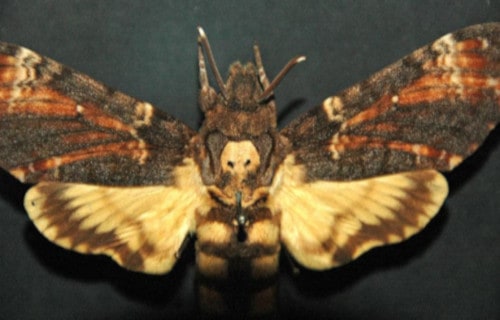

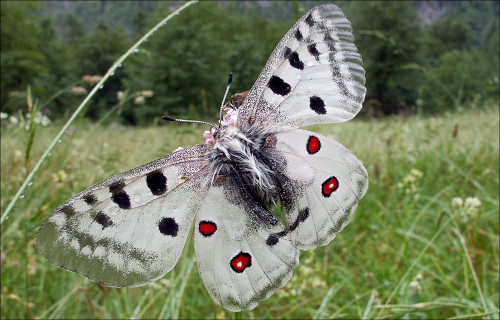

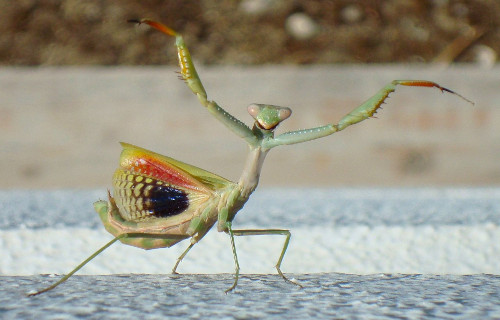
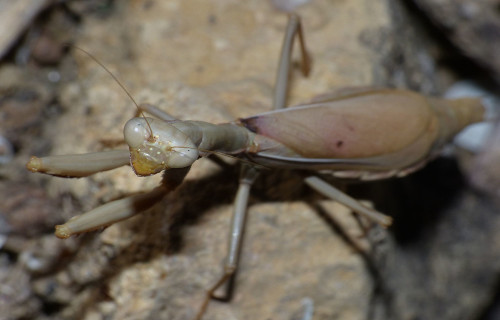
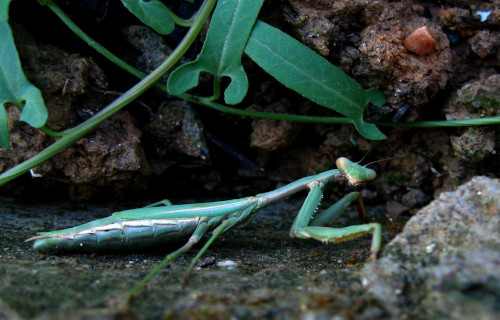
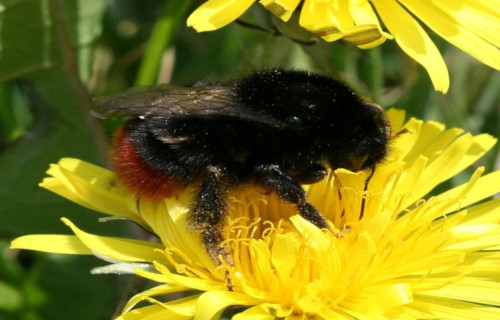
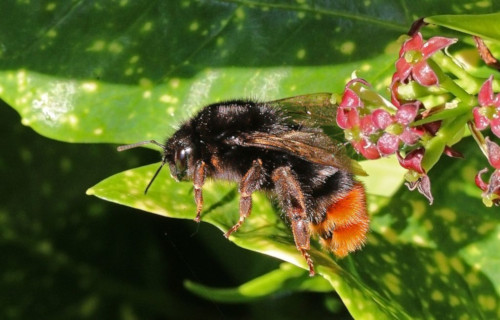
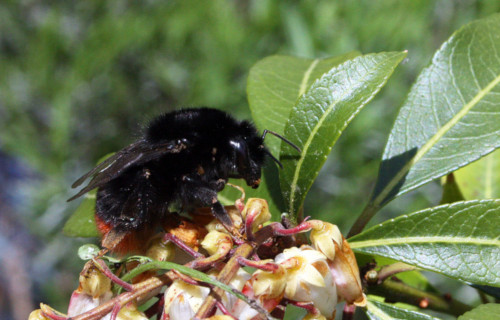

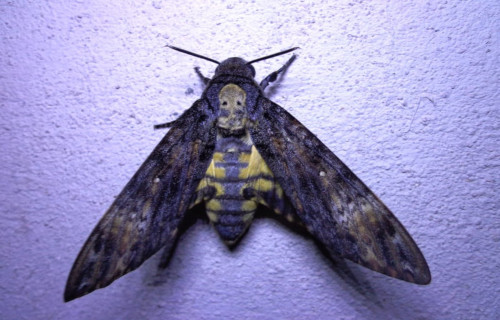
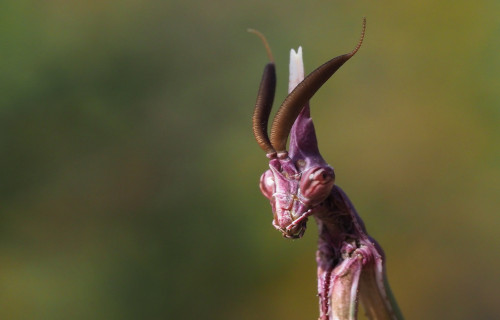
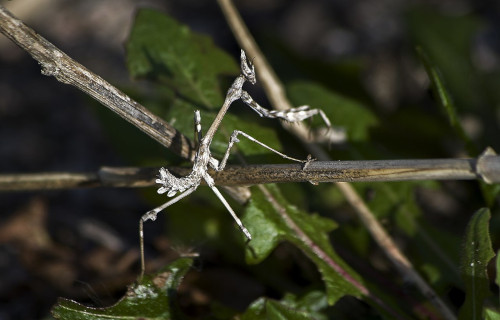
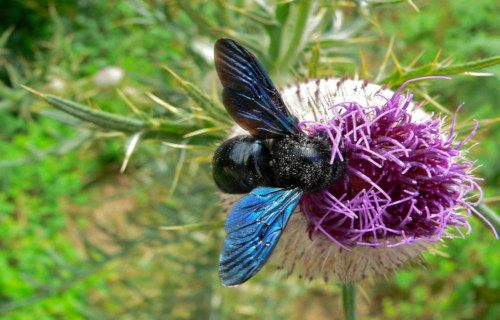
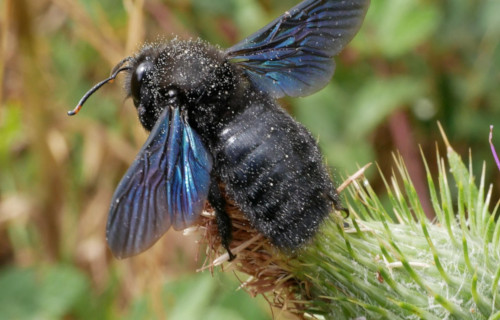
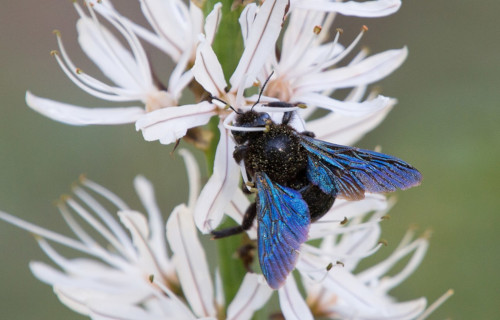

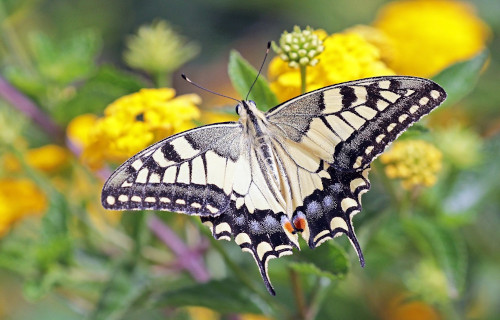
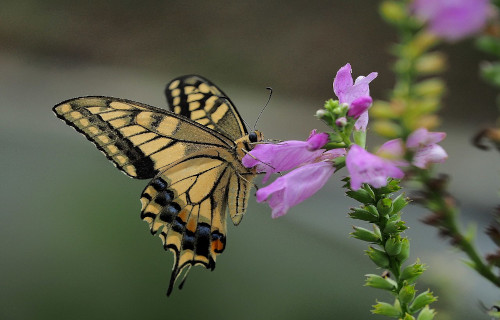









Leave a Reply